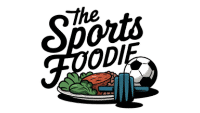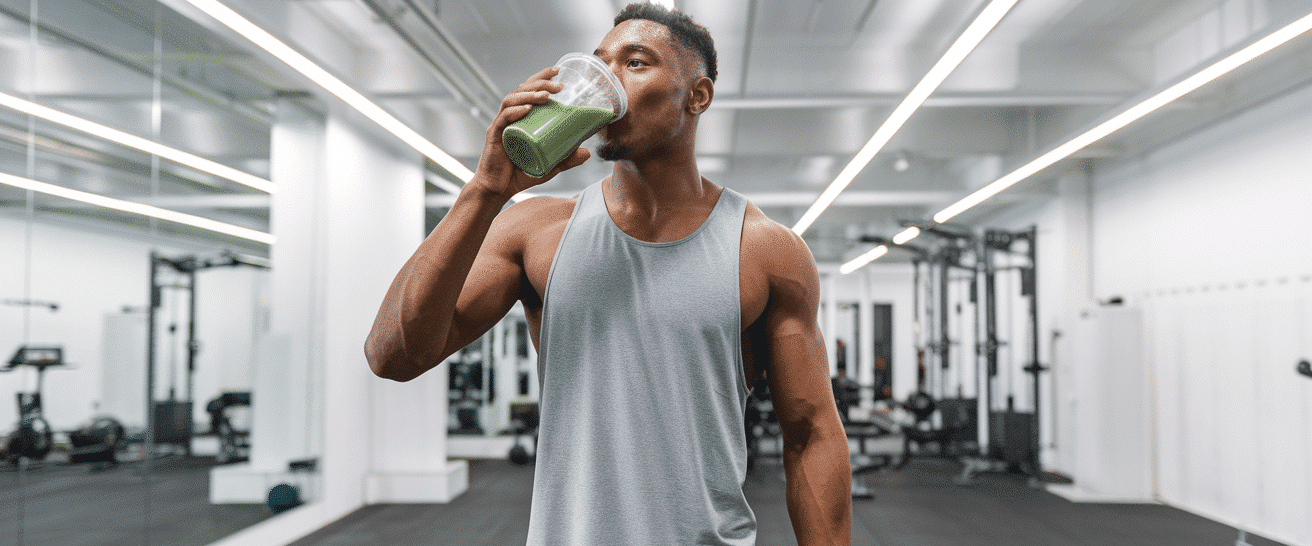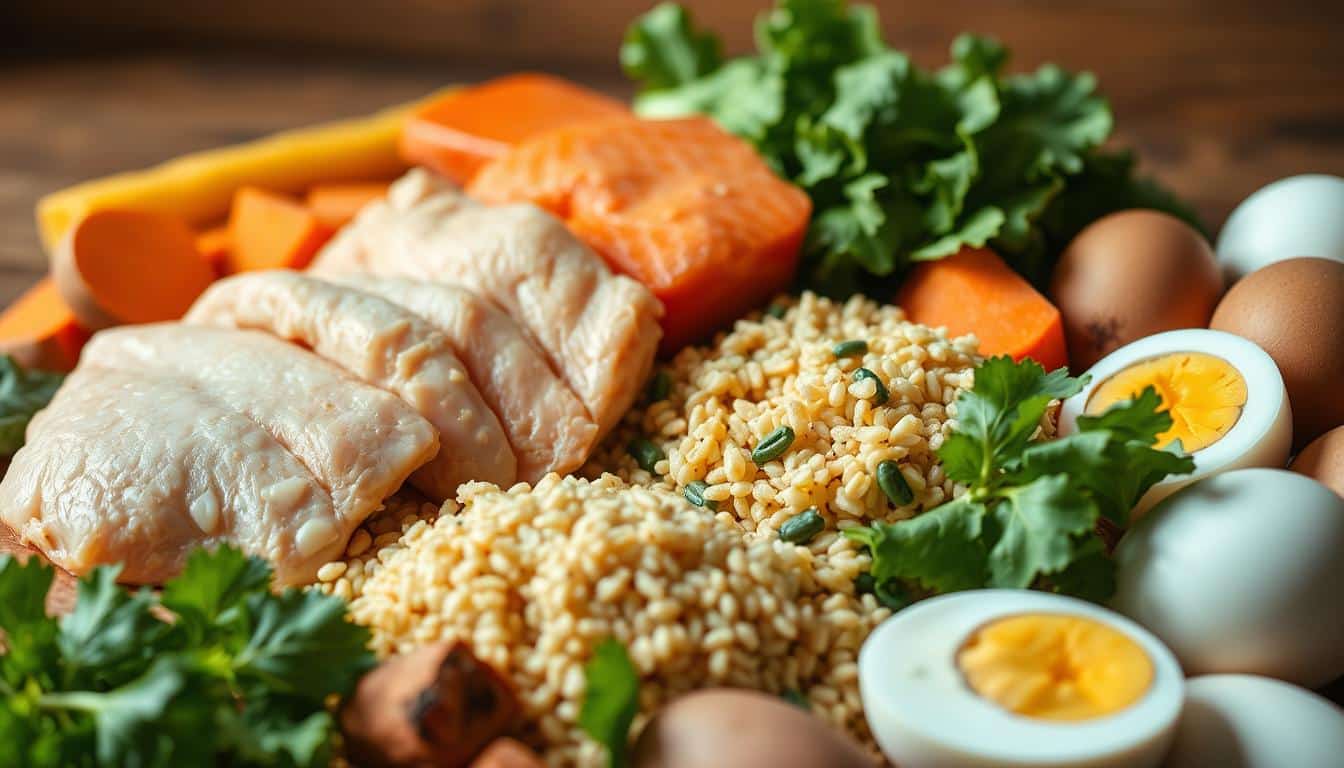Ever feel like your energy crashes during explosive workouts? If you’re into sprinting, weightlifting, or other high-intensity activities, your body needs the right fuel to perform. The right anaerobic sports diet keeps you powerful, fast, and ready for action.
Short, intense efforts demand quick energy and strong recovery. Without proper nutrition, you risk fatigue, muscle loss, and weaker performance. But don’t worry—this guide breaks down the essentials into simple steps.
Carbs give instant fuel, while protein helps muscles rebuild. Whether you’re a pro or just getting started, smart eating makes a huge difference. Want a tasty way to refuel? Try these healthy desserts that keep your training on track.
What Is an Anaerobic Sports Diet?
Short bursts of energy require a special kind of fuel—here’s why. Unlike endurance activities, explosive efforts like sprinting or lifting rely on your body’s ability to perform at max power for seconds to two minutes. That’s where the right diet steps in.
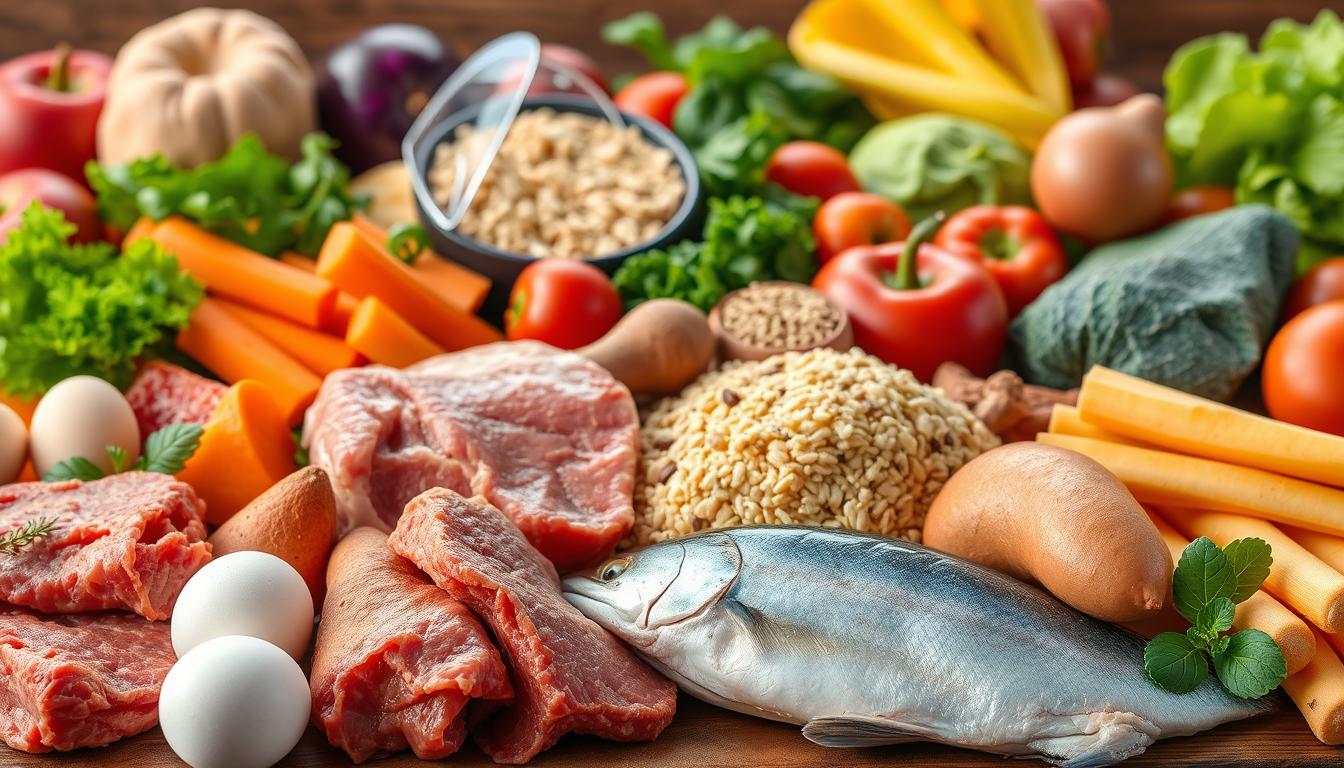
Anaerobic vs. Aerobic: The Key Difference
Think of aerobic exercise as a marathon—steady and long. Anaerobic efforts are sprints: all-out, quick, and intense. Football players, gymnasts, and boxers excel in these short, powerful moves.
How Food Powers Your Performance
Carbs are your go-to for instant energy. They fuel the ATP system, your body’s turbo boost for lifts or jumps. Protein? It patches up muscle micro-tears post-workout. Picture a gymnast nailing a vault—every ounce of strength comes from smart fueling.
Elite athletes don’t just train hard; they eat strategically. Whether you’re lifting weights or racing 100 meters, your plate is half the battle.
Energy Systems in Anaerobic Exercise
Your body has two turbocharged energy systems for explosive moves—here’s how they work. Whether you’re lifting max weight or sprinting 200 meters, these systems keep you moving fast and strong.
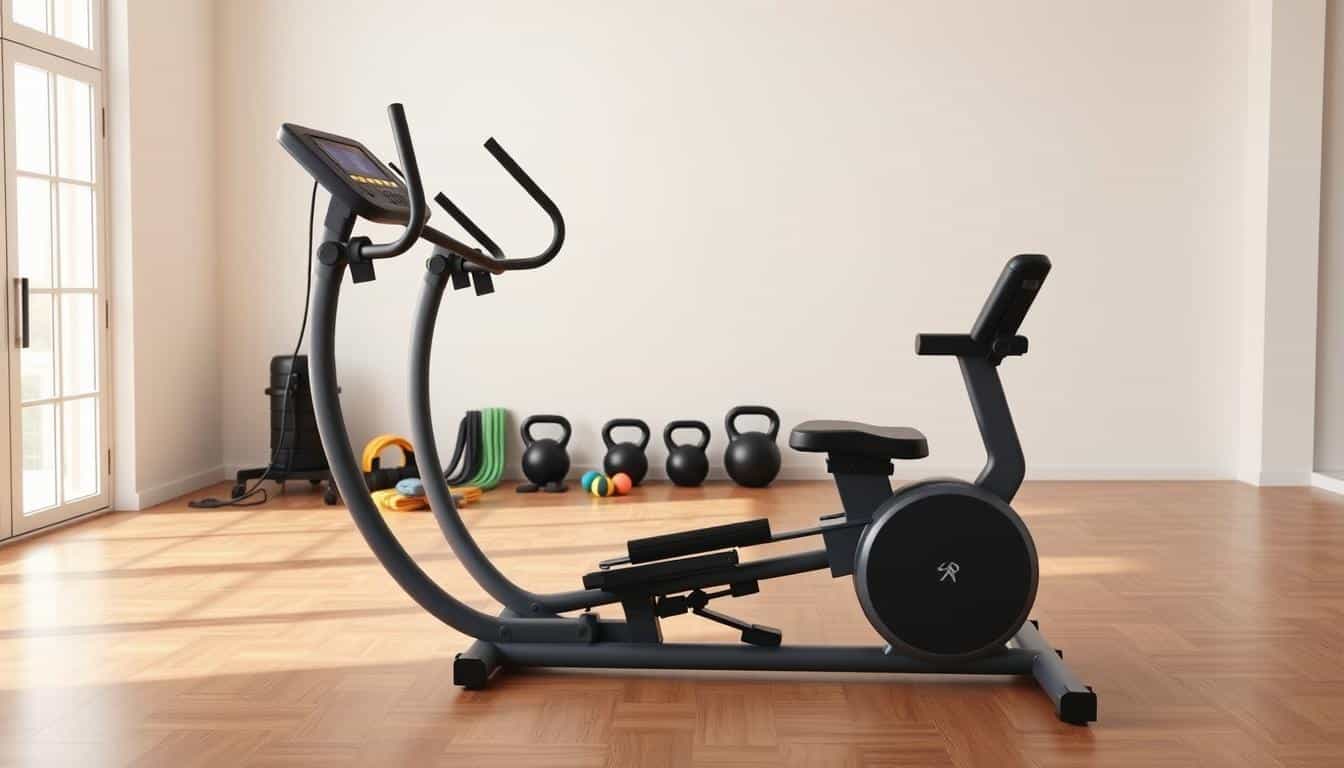
ATP-CP: The Instant Powerhouse
For short bursts (0–10 seconds), your muscles use ATP and creatine phosphate. Think of ATP as your body’s energy cash—it’s spent instantly for contractions. When ATP runs low, creatine phosphate steps in to reload it.
A weightlifter snatching a barbell relies entirely on this system. No oxygen needed—just raw, immediate energy.
Glycolysis: The Mid-Range Fuel
Efforts lasting 10–120 seconds tap into glycolysis. Here, glucose breaks down for fuel, producing lactate as a byproduct. Ever felt that burn during a 200m dash? That’s lactate building up.
Training can raise your lactate threshold, letting you push harder for longer. Sprinters use this system to maintain speed past the first explosive seconds.
| System | Duration | Fuel Source | Example Activity |
|---|---|---|---|
| ATP-CP | 0–10 seconds | ATP + creatine phosphate | Heavy deadlift |
| Glycolysis | 10–120 seconds | Glucose (from carbs) | 400m sprint |
Pro tip: Pair training with smart fueling. Carbs pre-workout boost glucose stores, while creatine supplements can enhance ATP-CP recovery. Your body adapts fast—give it what it needs!
Macronutrient Breakdown for Anaerobic Athletes
Explosive power starts in the kitchen—here’s how to fuel it right. Whether you’re lifting heavy or sprinting hard, your body craves a precise mix of carbohydrates, protein, and fats. Nail this balance, and you’ll recover faster, hit PRs, and feel unstoppable.
Carbohydrates: Your Energy Rocket Fuel
Short, intense efforts burn through glycogen fast. Aim for 6–10g of carbohydrates per kg of body weight daily. Top picks:
- Rice: Quick-digesting and versatile.
- Bananas: Packed with potassium to fight cramps.
- Oats: Slow-release energy for sustained power.
Protein: The Muscle Repair Crew
Every rep creates tiny tears. Protein patches them up, helping you grow stronger. Shoot for 1.6–2.2g per kg daily, spaced every 3–4 hours. A 20–40g serving post-workout kicks off recovery.
Fats: The Unsung Hero
Healthy fats like avocados and nuts support hormone production and long-term energy. Keep them at 20% of your diet to avoid slowing digestion before workouts.
| Macronutrient | % of Diet | Role | Best Sources |
|---|---|---|---|
| Carbohydrates | 60% | Instant energy, glycogen replenishment | Rice, oats, fruits |
| Protein | 20% | Muscle repair and growth | Chicken, eggs, Greek yogurt |
| Fats | 20% | Hormone support, sustained energy | Avocados, nuts, olive oil |
Pro tip: Adjust ratios based on training intensity. More carbs on heavy days, extra protein during recovery phases. Listen to your body—it’s the best coach you’ve got!
Pre-Workout Nutrition
What you eat before a workout can make or break your performance. The right meals and snacks fuel explosive energy, while the wrong ones leave you sluggish. Let’s break down the perfect pre-training plan.
Meal Timing: 3–4 Hours Before
Your body needs time to digest. Aim for a balanced meal 3–4 hours before training. Half your plate should be carbs, like sweet potatoes or rice. Add lean protein (grilled chicken) and veggies (broccoli).
Example meal:
- Grilled chicken (25% protein)
- Sweet potatoes (50% carbs)
- Steamed broccoli (fiber + vitamins)
Snacks: 30–60 Minutes Before
Need a quick boost? Stick to simple carbs 30–60 minutes prior. They digest fast, giving instant energy. Try:
- Banana with almond butter
- Rice cakes with honey
- A small smoothie (recipe below)
Foods to Avoid
Some foods cause bloating or energy crashes. Steer clear of these before workouts:
| Food | Why Avoid? |
|---|---|
| Beans | High fiber slows digestion |
| Fried foods | Fat delays stomach emptying |
| Dairy | May cause discomfort mid-workout |
| Cruciferous veggies | Gas-inducing (e.g., cauliflower) |
| Caffeine (for some) | Can trigger jitters or crashes |
Pro tip: For sensitive stomachs, blend a light smoothie: 1 banana, ½ cup oats, almond milk, and a scoop of protein. It’s easy on digestion and packs quick energy.
Pair these fueling strategies with smart hydration, and you’ll power through every rep. For more on balancing macros, check out our keto diet guide.
During-Workout Fueling
Fueling mid-workout keeps your energy steady—here’s how. Whether you’re lifting, sprinting, or grinding through drills, smart hydration and snacks prevent crashes.
Hydration: Sip to Stay Sharp
Lose just 2% of your body weight in sweat, and performance drops. Drink 7–10oz of water every 10–20 minutes. For sessions over an hour, add electrolytes to replace lost sodium and potassium.
Pro tip: Check urine color—pale yellow means you’re hydrated. Dark? Drink up!
Quick-Energy Snacks
Need a boost? Grab fast-digesting carbs:
- Energy gels: 25g carbs per packet (easy to carry).
- Bananas: Natural sugars + potassium to fight cramps.
- Dried fruit: Portable and no mess.
Avoid sugary sodas—they spike blood sugar, then crash it mid-training. Stick to sports drinks or whole foods.
Example: A football player grabs a gel at halftime to recharge for the second half. Small moves, big results!
Post-Workout Recovery Meals
Your post-workout meal is just as crucial as your training—here’s why. The right recovery foods refill energy stores, repair muscle, and prep you for tomorrow’s session. Skip this step, and you’ll feel sluggish and sore.
Refuel with the Right Ratio
Eat a 3:1 mix of carbohydrates to protein within an hour post-workout. Carbs reload glycogen, while protein patches up muscle fibers. Example:
- Grilled salmon (protein)
- Jasmine rice (carbs)
- Roasted asparagus (fiber)
Protein’s Magic Number
30g of protein triggers optimal muscle repair. Not a meat-eater? Try these slow-digesting options:
- Greek yogurt (17g per cup)
- Tofu stir-fry with quinoa (20g per serving)
| Time Post-Workout | Priority | Best Choices |
|---|---|---|
| 0–30 minutes | Hydration + quick carbs | Chocolate milk (ideal 3:1 ratio) |
| 1–2 hours | Protein + slow carbs | Chicken + sweet potatoes |
Pro tip: Blend a recovery smoothie with banana, oats, and whey for a no-fuss option. Your muscles will thank you!
Hydration for Anaerobic Performance
Staying hydrated isn’t just about drinking water—it’s about maximizing your power. Lose even 2% of your body weight in sweat, and your strength drops fast. For short, intense efforts, every sip counts.
Water vs. Electrolyte Drinks
Water works for quick sessions under an hour. But for longer grind? Add electrolytes. Sodium, potassium, and magnesium prevent cramps and keep energy steady.
- Water: Best for short bursts (e.g., 30-minute lift session).
- Electrolyte drinks: Crucial for >1-hour football drills or HIIT.
Spot the Warning Signs
Dehydration hits hard. Watch for these red flags:
- Dark urine (aim for pale yellow).
- Dizziness mid-sprint.
- Muscle cramps that won’t quit.
Smart Hydration Hacks
Calculate daily needs: Divide your weight (lbs) by 2—that’s your minimum water intake in ounces. For a homemade boost, mix:
- 16oz water + ¼ tsp salt + ½ cup orange juice.
Pro tip: Sip small amounts every 15 minutes. Chugging raises risk of bloating or overhydration, which dilutes sodium levels.
Sample Meal Plan for Anaerobic Athletes
Ready to power up your day with meals that match your intensity? This plan fuels explosive moves with balanced foods and smart timing. No guesswork—just results.
Breakfast: Jumpstart Your Day
Kick off with protein and complex carbs. They keep energy steady and muscles primed. Try these combos:
- Spinach omelet + whole-grain toast (fiber for slow digestion).
- Oatmeal topped with almonds + scrambled eggs (carbs + protein).
Lunch & Dinner: Power Pairs
Pair lean protein with energizing carbs and vegetables. Examples:
- Turkey wrap + sweet potato fries (quick fuel + vitamins).
- Grilled chicken + rice + roasted Brussels sprouts (muscle repair + fiber).
Snacks: Quick Energy Boosts
Between meals, grab these portable options:
- Greek yogurt + berries (probiotics + antioxidants).
- Protein shake + mixed nuts (fast recovery + healthy fats).
| Time | Meal | Key Benefits |
|---|---|---|
| 7 AM | Spinach omelet + toast | Sustained energy, muscle protection |
| 1 PM | Turkey wrap + fries | Fast-digesting carbs + lean protein |
| 7 PM | Salmon + quinoa | Omega-3s + complete protein |
Pro tip: Prep meals in advance to stay on track. A Sunday cookout saves weekday stress!
Supplements for Anaerobic Sports
Want to push harder and recover faster? The right supplements can help. While food comes first, a few science-backed products give you an edge in high-intensity efforts.
Creatine: The Instant Energy Booster
Creatine supercharges your ATP system—the same one used for heavy lifts or sprints. For quick results, try a loading phase: 20g/day for 5 days, then 3–5g daily. Stick to monohydrate form; it’s proven and affordable.
Beta-Alanine: Fight the Burn
This amino acid buffers lactic acid, letting you sprint longer. Take 3–6g daily (split doses to avoid tingles). Studies show it boosts performance at the 60-second level—perfect for 400m dashes or boxing rounds.
Whey Protein: Faster Muscle Repair
Whey absorbs 30% quicker than plant-based protein, making it ideal post-workout. Look for isolates (90% protein) if you’re lactose-sensitive. Vegan? Pea protein blends work too—just pair with rice protein for a complete amino profile.
Smart Shopping Tips
- Avoid proprietary blends: They hide ingredient doses.
- Check labels: NSF Certified for Sport guarantees purity.
- Compare prices: Big-box stores often overcharge for branded tubs.
Pro tip: Stack creatine + beta-alanine for max power. Pair with carbs post-workout to spike insulin and drive nutrients into muscles!
Common Mistakes to Avoid
Small mistakes in your eating habits can sabotage big gains—here’s how to fix them. Even dedicated athletes stumble into these traps, but awareness keeps you on track.
Skipping Meals: A Hidden Performance Killer
Missing meals spikes your risk of low energy and muscle loss. Chronic undereating can lead to REDs (Relative Energy Deficiency in Sport), disrupting hormones and recovery.
Signs you’re underfueling:
- Constant fatigue during training.
- Irregular periods (for women).
- Mood swings or poor sleep.
Supplements Aren’t a Magic Fix
Protein powders and pre-workouts help, but overuse strains your body. Excess protein stresses kidneys, while synthetic boosters can cause dehydration.
Foods should supply 80% of your nutrients. Supplements fill gaps—they don’t replace meals. One college sprinter learned this the hard way:
“I relied on shakes for months. My energy crashed, and my times got worse. Switching to real diet meals fixed everything.”
Simple Fixes for Busy Schedules
No time to cook? Batch-prep these foods:
- Hard-boiled eggs (protein + portable).
- Pre-cut veggies with hummus.
- Overnight oats (carbs + fiber).
Remember: Small tweaks lower your risk and keep you performing at your peak!
Adjusting Diet for Competition Days
Competition day is game time—your diet can be the difference between winning and just showing up. Small tweaks in the final 48 hours optimize energy, weight, and recovery. Whether you’re a wrestler cutting pounds or a sprinter fueling speed, these strategies deliver when it counts.
Carb-Loading: The 3-Day Power-Up
For endurance-heavy sports like wrestling, start 48 hours before with 8–12g carbs per kg of body weight. This floods muscles with glycogen—your energy reserve. Sample plan:
- Day 1: Oatmeal + banana (breakfast), rice bowls + chicken (lunch/dinner).
- Day 2: Pancakes + honey (breakfast), pasta + turkey meatballs (lunch/dinner).
- Game day: Toast + jam (3 hours pre-event) for quick-digesting fuel.
Weigh-In Strategies: Smart Sodium & Water Play
Need to hit a weight class? Manipulate water intake safely:
- 5 days out: Drink 1+ gallons/day to flush excess water.
- 24 hours out: Cut sodium to reduce retention.
- Post-weigh-in: Rehydrate with electrolyte drinks + salty snacks.
Never lose more than 1–2% of body weight weekly—it risks muscle loss and crashes.
Competition Day Timeline
Stick to this schedule for steady energy:
| Time | Action |
|---|---|
| 3–4 hours before | Meal: Rice + lean protein (digests fully) |
| 1 hour before | Snack: Banana + almond butter (fast fuel) |
| 15 minutes before | Sip electrolyte drink (prevents cramps) |
| Post-event | Chocolate milk (3:1 carbs:protein) |
Pro tip: Test these strategies in training first. Your body recovers fastest when you practice fueling like you compete!
Conclusion
Great results start with smart habits—let’s lock them in. Elite athletes know success hinges on three pillars: fuel, train, recover. Nail this cycle, and you’ll boost performance every session.
Track meals in a food journal to spot what works. Small tweaks, like swapping snacks or timing carbs, add up fast. Adjust your training and diet gradually to avoid overwhelm.
For personalized plans, consult a sports dietitian. They’ll help tailor meals to sustain energy and crush goals.
Ready to dominate your next workout? Start today—one smart choice at a time!
